Chuncheonho Lake (춘천호)
14.4 Km 15507 2020-08-15
Owol-ri, Chuncheon-si, Gangwon-do
+82-33-245-2211
Chuncheonho Lake was formed as a result of the construction of Chuncheon Dam in February 1965. The area around the dam has been developed into a recreational park with a camping ground, fishing spot, picnic areas, lookout sheds, bungalows, restaurants and other convenience facilities.
The Chuncheon Circular Road lies along Uiamho Lake, and connects Chuncheon Dam with Uiam Dam. It has a fishing site, and a street lined with restaurants serving maeuntang (spicy fish stew). Nearby attractions include a valley, Satgatbong Mountain, and Jibdarigol Recreational Forest.
National Center for Forest Activities Chuncheon (국립춘천숲체원)
15.1 Km 25 2021-08-09
331, Jangbon 2-gil, Chuncheon-si, Gangwon-do
National Center for Forest Activities Chuncheon is 335 ha of area located near Samhangol Valley. The center has a slogan PLAY meaning P for Play, L for Lead, A for Act, and Y for You. Various facilities are available including area for experience programs, accommodations, restaurants and more. Experience programs for individuals and groups are available as well as special programs for people with disabilities and elderlies.
Chuncheon Cheongpyeongsa Temple (청평사 (춘천))
16.0 Km 41925 2023-05-22
810, Obongsan-gil, Chuncheon-si, Gangwon-do
+82-33-244-1095
Cheongpyeongsa Temple is a Buddhist temple with 1,000 years of tradition, located at Obongsan Mountain. Originally established as Baegamseonwon Temple in 973, the temple changed its name several times, went through construction works, and has become the current Cheongpyeongsa Temple. Yi Ja-hyeon, a scholar of the Goryeo period, built a garden here by keeping its natural topography after he left his government post. In this area, there is a pond that was built during the Goryeo period and has preserved its original form. Many cultural heritages have disappeared over the years and during the Korean War as well. The remaining cultural heritages include Hoejeonmun Gate of Cheongpyeongsa Temple (Treasure No. 164), Three-story Stone Pagoda of Cheongpyeongsa Temple (Gangwon-do Cultural Heritage Material No. 8), and Stupa of Yi Ja-hyeon (posthumous epithet: Jillakgong). Cheongpyeongsa Temple’s Hoejeonmun Gate was built instead of Sacheonwangmun Gate (the gate of the Four Guardian Kings) to enlighten people about the transmigration of souls. Cheongpyeongsa Temple bears a myth about a princess and a serpent. The princess suffered a lot from a serpent as she couldn’t get rid of it from her body. Then she came to Cheongpyeongsa Temple and prayed to the Buddha, and she became free from the serpent. Therefore, the Three-story Stone Pagoda of Cheongpyeongsa Temple is also called “Princess Pagoda.” Although the scale of the temple is not large, it is known for its beautiful natural landscape harmonized with artificial structures, such as a pavilion and a pond. Accordingly, the temple area was designated as Scenic Site No. 70. Cheongpyeongsa Temple can also be reached by taking a ferry at the Soyanggang Dam Quay.
Peace Dam - Hwacheon (평화의댐 (화천))
17.3 Km 9848 2022-12-26
3481-18 , Pyeonghwa-ro, Hwacheon-gun, Gangwon-do
+82-33-480-1512
Peace Dam in Hwacheon-gun was built in response to a potential flooding attack from North Korea. The first phase of construction began in 1986, and ended in 1989; the second phase, which entailed raising the x_height of the dam, began in 2002, and ended in 2005.
Over the years, the dam has become a major tourist destination. It has several cultural and recreational facilities including the Water Culture Center, an artificial wall stream, and rest areas. It is also located close to the DMZ, and natural landmarks such as Bimok Park, Bisugumi Valley, and Suhari Fishing Site.
Hwacheon Bimok Park (화천 비목공원)
17.3 Km 19686 2021-08-18
3481-70, Pyeonghwa-ro, Hwacheon-gun, Gangwon-do
+82-33-440-2225
Peace Dam was built over a period of 15 months from February 1987 to May 1988 with funds donated by the general public in response to North Korea’s construction of Geumgangsan Dam and a potential flooding attack. The flood control dam has proved its worth during the floods of 1995, 1996, and 1999 and it has become a major tourist destination over the years. Located in the vicinity of Peace Dam is Bimok Park, which is the origin of the famous national song “Bimok.”
In addition to the war monuments inside the park, there are around a dozen wooden crosses with rusty iron helmets placed on top within the barbed wire entanglements around the hill, thereby reminding visitors of the national tragedy of the Korean War. The county of Hwancheon hosts the Bimok Cultural Festival from June 3 to June 6 every year at Bimok Park, Bungeoseom Island by the town’s riverside, and the surrounding areas. The four-day festival offers a variety of events such as a singing contest, memorial ceremony of poetry reading, bimok tree cutting contest, rice ball eating contest, army life experience, military music parade, and more.
Crossing over to Yanggu County from Peace Dam, there is a national security education place comprised of attractions like the 4th Underground Tunnel and Eulji Observatory. Paroho Lake Battlefield Tourist Park is also worth a visit after looking around Peace Dam. Also known as the “ocean within mountains,” Paroho is a manmade lake created as a result of the Hwacheon Dam construction in 1944. The lake is home to over 70 different species of freshwater fish such as mandarin fish and carp. It also holds the sorrowful history of the water burial of three whole divisions of the Chinese Forces in defending the lake during the Korean War. The name Paroho, meaning “enemy breaking lake,” was given after the late president of Korea, Rhee Syngman, visited the place and designated a plaque in his own handwriting in memory of obtaining victory in fierce battle. There is an observatory, a security hall, and a stone monument engraved with the poetry of Wolha Rhee Taegeuk (1913-2003).
Chuncheon Makguksu Museum (춘천막국수체험박물관)
17.7 Km 25089 2022-10-14
264, Sinbuk-ro, Chuncheon-si, Gangwon-do
+82-33-244-8869
Chuncheon Makguksu Museum was built with the theme of buckwheat noodles (makguksu), Chuncheon’s local dish. The museum's unique exterior design was inspired by the image of making buckwheat noodles. This two-story building has an exhibition hall introducing buckwheat noodles (makguksu) and buckwheat (maemil) on the first floor and an experience center where visitors can make and try their own makguksu on the second floor. In particular, the first floor displays a dimensional exhibition on the origin and tradition of makguksu, and the origin and efficacy of maemil. It is recommended to visit the exhibition before the makguksu making experience activity. The makguksu making experience is available starting from groups of two people. With the help of an instructor, participants will experience the entire production process of makguksu from kneading dough to making noodles by pressing the noodle frame. After finishing making noodles, participants will mix noodles with vegetables and a spicy sauce. Soy sauce seasoning is also available.
Jipdarigol Recreational Forest (집다리골자연휴양림)
17.9 Km 17198 2021-04-20
130, Hwaakjiam 1-gil, Sabuk-myeon, Chuncheon-si, Gangwon-do
+82-33-248-6716
This recreational forest, famous for its clear water and broad-leaved virgin forest, is located at the foot of the Hwaaksan Mountain (1,468 m). The name of Jipdarigol has an amusing legend behind it: a young woman and a man, living on the different sides of a large valley, fell in love with each other and made a straw bridge (“jipdari”) to meet each other. Jipdarigol Recreational Forest of today is a popular destination for summer and fall, thanks to its wonderful valley and beautiful forest. The forest includes accommodations and an open-air deck for day trippers, installed along the valley with a x_width of 8 m2 and 15 m2. It can be used until 19:00, and tents and simple cooking are allowed. However, visitors are prohibited from using charcoal and wood fire, and electric equipment. Other facilities include the walking trail, hiking trails, and suspension bridge.
Soyangho Lake Ferry (소양호 유람선)
19.6 Km 16223 2020-04-28
1133, Sinsaembat-ro, Chuncheon-si, Gangwon-do
+82-33-242-2455
Soyangho Lake was created by the building of Soyanggang Dam in 1973, and holds approximately 2.7 billion tons of water. It is the largest lake in Korea, earning it the nickname of the "inland sea." Islands dot the landscape, and the lake is home to over 50 types of freshwater fish, making it a popular destination for watersports and fishing.
Chuncheon Soyangho Lake (소양호 (춘천))
19.9 Km 27995 2021-05-06
1128, Sinsaembat-ro, Chuncheon-si, Gangwon-do
+82-33-242-2455
Soyangho Lake was created by the building of Soyang Dam in 1973. Soyangho Lake is famous for catching freshwater fish, such as trout, carp, smelt, and eel. The waterway stretches all the way to Inje, with beautiful scenic views. Water sports can be enjoyed from the dock near Soyang Dam, with boat rides to Cheongpyeongsa Temple as well as around the lake. Many cafes and restaurants are located around the lake, making it a great vacation spot.
Soyang Dam (소양강댐)
19.9 Km 44981 2023-05-22
1128, Sinsaembat-ro, Chuncheon-si, Gangwon-do
+82-33-242-2455
Built in October 1973, Soyang Dam is the largest dam in Korea. It stands 123 meters high and 530 meters long and can hold up to 29 million tons of water. The stored water which has become Soyangho Lake, is Korea's largest man-made lake, spanning a large area that borders the Gangwon-do cities and districts of Chuncheon, Hongcheon, Yanggu, and Inje. Visitors can enjoy riding a ferry or walking on the 2.5-kilometer walking trail. Various restaurants and attractions are also nearby.
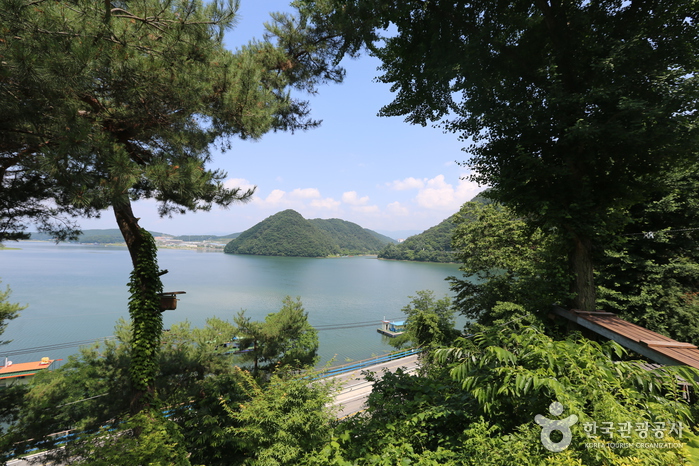
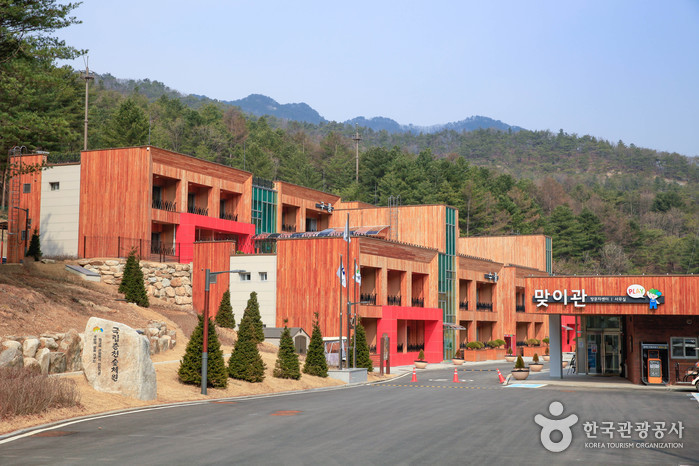

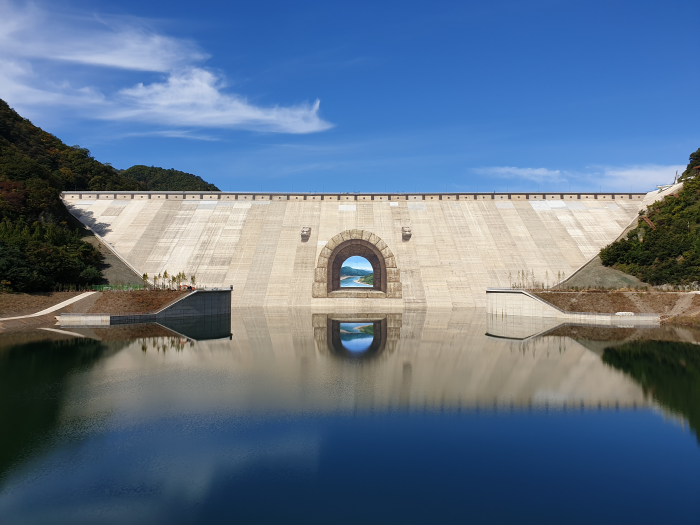
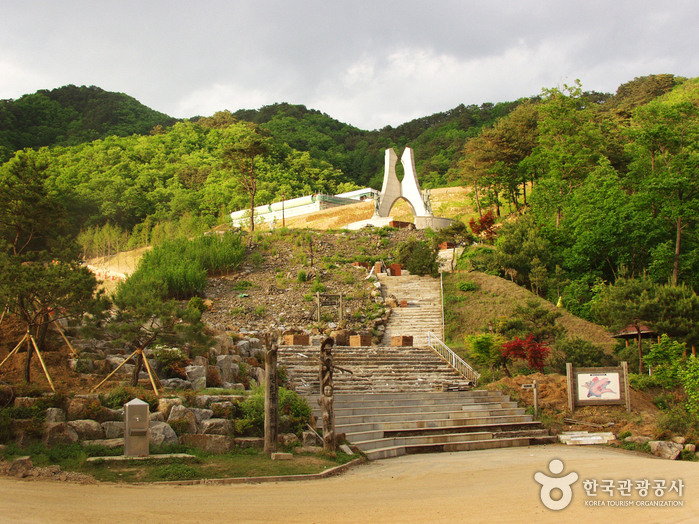
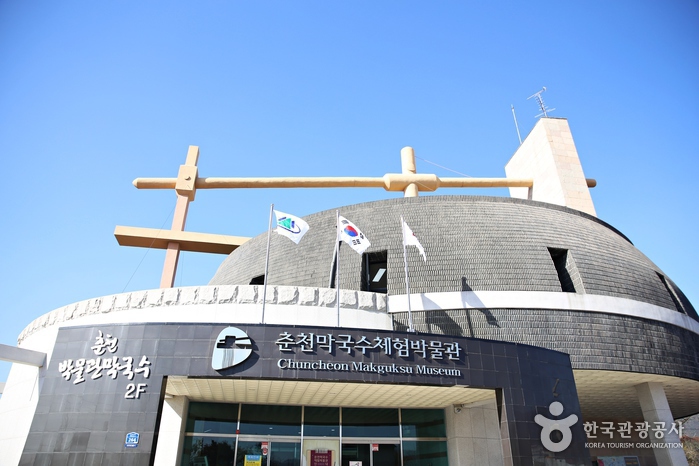
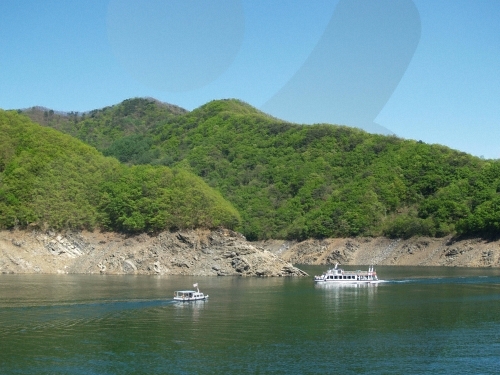
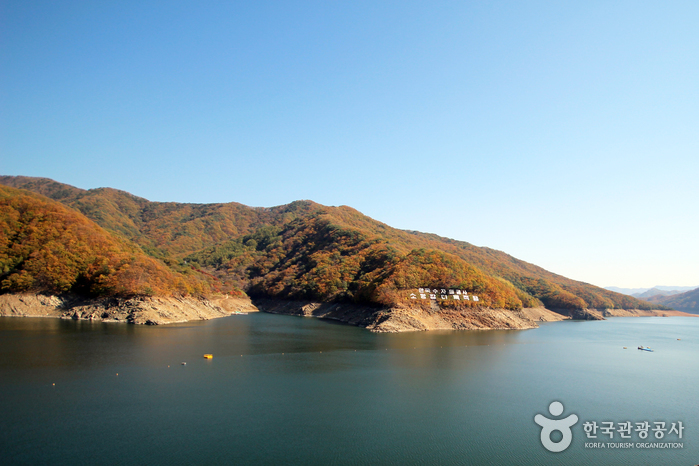
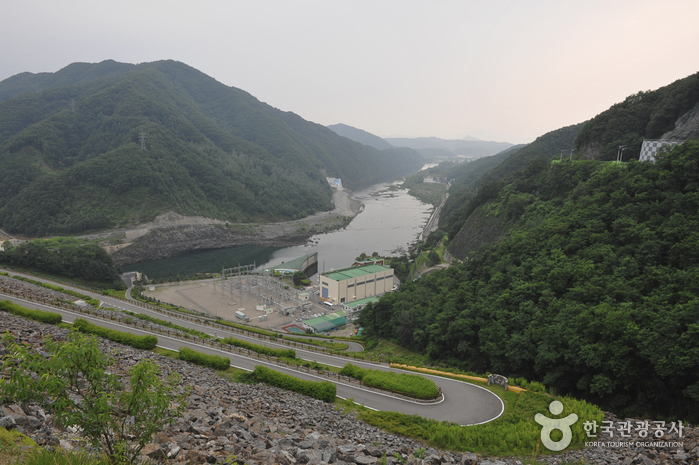
 English
English
 한국어
한국어 日本語
日本語 中文(简体)
中文(简体) Deutsch
Deutsch Français
Français Español
Español Русский
Русский